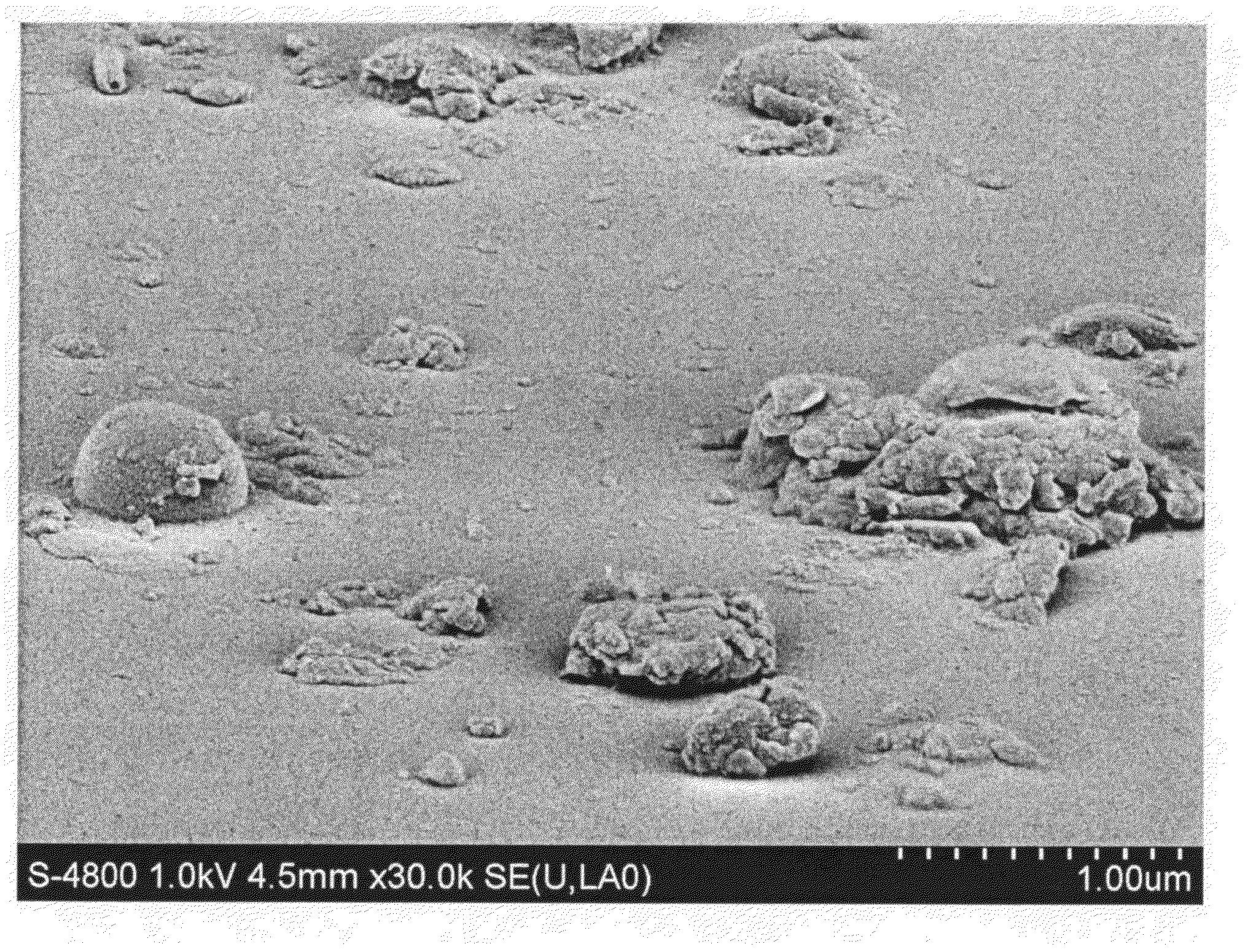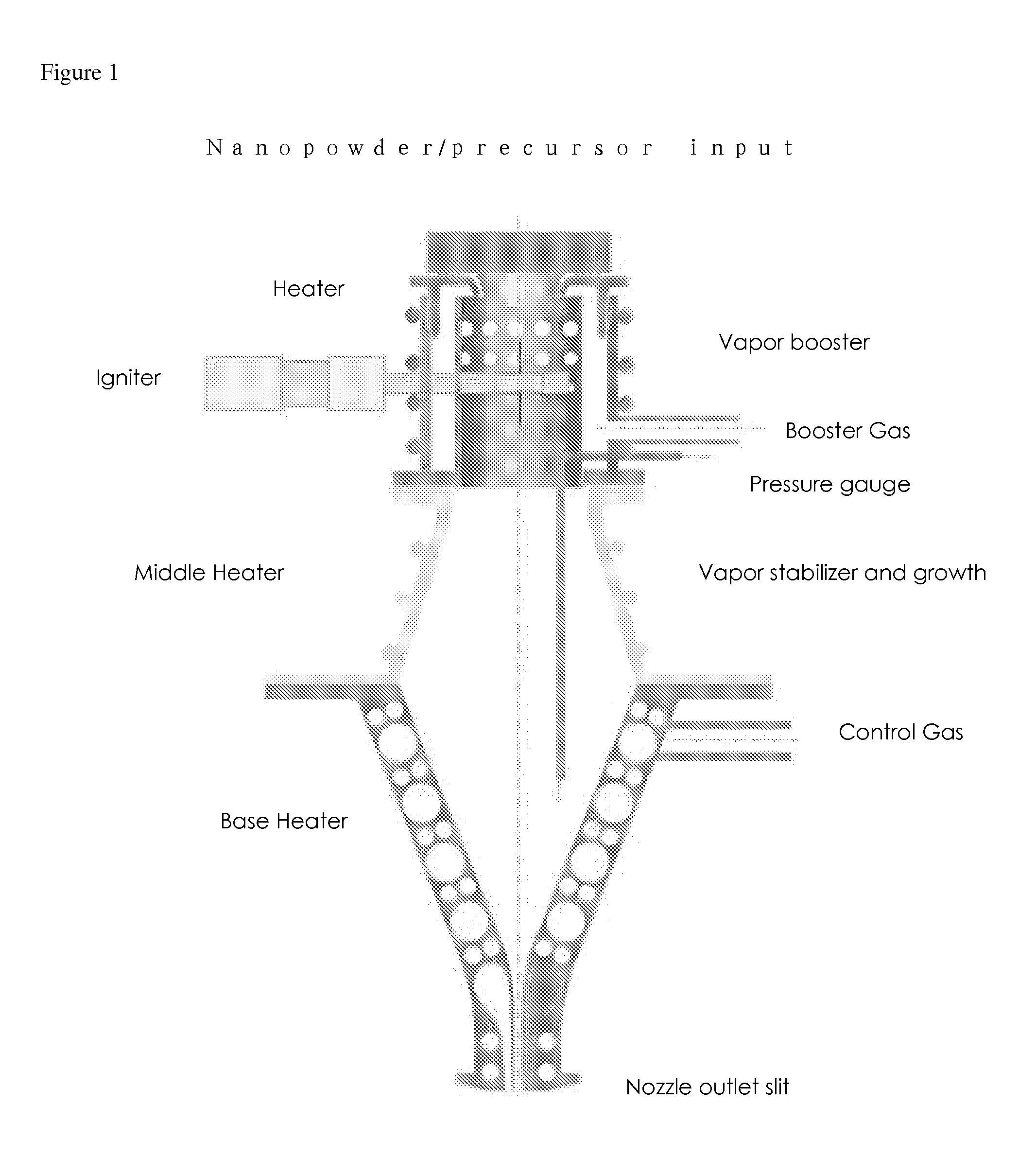Process for Forming High Surface Area Embedded Coating with High Abrasion Resistance
a technology of embedded coatings and high surface area, which is applied in the direction of traffic signals, roads, transportation and packaging, etc., can solve the problems of limited chemical or mechanical bonding to the surface, coatings are only about 50% as hydrophobic, and most coatings lose their shine and transparency, etc., to achieve enhanced oil wetting, reduce friction, and reduce the effect of friction
- Summary
- Abstract
- Description
- Claims
- Application Information
AI Technical Summary
Benefits of technology
Problems solved by technology
Method used
Image
Examples
example 1
Making Functional Surfaces Using WRIN Device with Flame-Produced Nanopowders: Soda-Lime Glass Substrate
[0054]As an example, to deposit durable coatings on soda-lime glass substrates, the following typical deposition conditions were used with the WRIN device in FIG. 1, with the length of the outlet slit being 20 cm. A solution of TEOS with 10 mol. % triethylborate and 0.5 mol. % aluminum acetalacetonate in alcohol was finely atomized and entered at a rate of 14 mL / min, which was combusted in the upper section to produce nanopowders in a gas medium, and a boost gas flow of air at 60 L / min. The heaters were controlled so that the powder containing WRIN outlet temperature was 650° C.; a heater controlled the glass substrate surface temperature of 600° C.; the WRIN device was moved relatively across the substrate at a motion speed of 50 inches / min; the glass heater was increased for an anneal temperature of 675° C. during an anneal time of 5 min after deposition, after which the glass wa...
example 2
Making Functional Surfaces Using WRIN Device with Flame-Produced Nanopowders: Soda-Lime Glass Substrate
[0055]As another example, to deposit durable coatings on soda-lime glass substrates, the following typical deposition conditions were used with the WRIN device in FIG. 1, with the length of the outlet slit being 20 cm. A solution of TEOS with 5 mol. % triethylborate and 0.5 mol. % aluminum acetalacetonate in alcohol was finely atomized and entered at a rate of 14 mL / min, which was combusted in the upper section to produce nanopowders in a gas medium, and a boost gas flow of air at 180 L / min. The heaters were controlled so that the powder containing WRIN outlet temperature is 640° C.; a heater controlled the glass substrate surface temperature of 650° C.; the WRIN device was moved relatively across the substrate, at a motion speed of 7 inches / min; The coating was then treated with a low surface energy chemical agent to make it superhydrophobic.
example 3
Making Functional Surfaces Using WRIN Device with Flame-Produced Nanopowders: Polycarbonate Substrate
[0056]As another example, to deposit durable coatings on polymer substrates, in this case polycarbonate, the same conditions and device were used as the previous example, except that the solution flow rate was 6 mL / min, the boost gas flow was 75 L / min, the heaters were adjusted to create a WRIN outlet temperature of 210° C., a substrate heater was used to provide a surface temperature of 94° C., and the motion speed was 20 inches / min. The coating was then treated with a low surface energy chemical agent to make it superhydrophobic.
PUM
| Property | Measurement | Unit |
|---|---|---|
| Temperature | aaaaa | aaaaa |
| Size | aaaaa | aaaaa |
| Speed | aaaaa | aaaaa |
Abstract
Description
Claims
Application Information
 Login to View More
Login to View More - R&D
- Intellectual Property
- Life Sciences
- Materials
- Tech Scout
- Unparalleled Data Quality
- Higher Quality Content
- 60% Fewer Hallucinations
Browse by: Latest US Patents, China's latest patents, Technical Efficacy Thesaurus, Application Domain, Technology Topic, Popular Technical Reports.
© 2025 PatSnap. All rights reserved.Legal|Privacy policy|Modern Slavery Act Transparency Statement|Sitemap|About US| Contact US: help@patsnap.com



